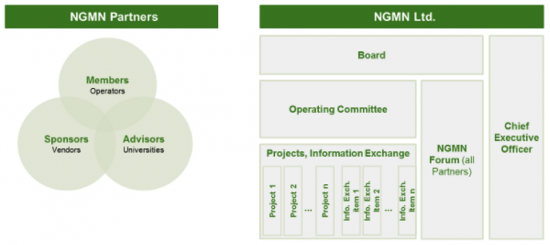Cisco asks the industry to think aggressively and to accept risks when it comes to 5G planning.
I was fortunate to attend the NGMN 5G Industry Conference in Frankfurt Germany March 24-25th. And while Frankfurt in March is a bit chilly for this Florida-boy, the conference was interesting and certainly well worth an investment of time. It was great to get together with over 300 people and to listen to a free exchange of ideas and views from the network operators, technology vendors and academia. Everyone was there for the common purpose to figure out what will 5G really be.
The NGMN is a network operator led organization that includes technology vendors and academia and takes an active role defining the requirements for next generation technology. They released their first of five white papers on 5G at this past MWC 2015. This initial white paper focused on use cases that illustrate requirements needed in 5G.

Why do we need 5G?
The general agreement is that 5G will be needed due to anticipated massive growth. Extreme Mobile Broadband, Massive Machine-Type Communications (mMTC), Ultra-reliable Machine-Type Communications (uMTC) are some of the drivers. In short, massive growth and demand (including the need to support requirements not as yet conceived) will go beyond what 4G (LTE and LTE-Advanced). As Cisco’s Paul Mankiewich, SP Mobility CTO stated, “5G will be driven by economics”; meaning that eventually LTE and virtualization alone will not support demand and will be too costly to push further while also inhibiting pursuing new revenue opportunities.
What is 5G about?
Clearly 5G is more than just greater bandwidth. There is plenty of bandwidth to be squeezed out of LTE-Advanced.
Areas of focus:
- Ultra-low Latency (1ms)
- Ultra-high Reliability
- Extreme environment (Urban canyons, rural)
- Use of low and high frequencies
One demonstration (video) made a clear case for the need of ultra-low latency (and jitter) along with ultra-high reliability; the autonomously driven vehicle. This demonstration used several small robotic vehicles traveling in a line. When the vehicle-to-vehicle (V2V) communications remained sub-one-millisecond (latency and jitter) the vehicle drove very well. Once the V2V communication latency rose above the 1ms mark that line of cars more closely resembled a Cha-Cha dance line with slightly intoxicated dancers. While fun in the lab, this would not a good real-world driving experience.
Another interesting use case that requires extreme reliability and other 5G requirements is the idea of remote medical robotics dispatched with Emergency Medical Technicians on site of serious accidents.

There were discussions regarding spectrum, both high and low frequencies. The allure of high frequencies is the general availability of large blocks of spectrum. However, these high frequencies have limitations including distance and possible line-of-site disruption. Experimentation is on-going to investigate the feasibility of using these frequencies in the future. We heard about Project Terapan: Experiments with “THz” to transmit 100Gbps. To date they have proven the ability to use 300 GHz for 10Gbps and their goal to reach 100 Gbps.
There is also the drive to improve energy performance of the radio access network by shifting the radio and core from being “Always on” to “Always available”.
From my personal perspective, the highlight of the conference was the Day-2 keynote by Cisco’s Paul Mankiewich, SP Mobility CTO.

Presentation highlights included:
The move to 5G will be driven by economic requirement. Only once the industry can no long extract value from 4G LTE with orchestrated virtualization will it be desirable to implement 5G architecture. To that end, 5G must be different from what we have done before. 5G cannot just be about radio access. Both of these statements were echoed by Network operators throughout the conference and in private meetings with Cisco’s CTO team.
We need to design 5G to support the “as yet unknown”.
Design a network that is “Mobile first” and also supports fixed-line.
Aggressive Thinking – Accept Risks
- Push the industry
- Drive the standards
- Develop a sound economic plan
Paul stated that more work needs to be done to achieve the goal of less than 1ms latency. The solutions offered today are too complex and too costly.
To this end, the presentation focused on Information Centric Networking; a wholly different kind of networking from IP transport. Rather than using numbered addresses to connect one end-point to another, ICN uses names to connect the end-user with specific, desired content (be that a voice conversation, a movie, and something else).
Paul closed with the observation that if the network operator industry fails to create an ICN-like architecture that someone like Google will and put it behind the SP’s IP transport network.
I can honestly report that the entire room was fully engaged with Paul’s presentation. All email’s stopped. People were listening, taking notes and photos of Paul and his projected slides.
Two days, over 17 presentations and various demonstrations on display from Universities and technology vendors was a lot to consume. But this was a good beginning to what will be a journey of several years. Stay tuned for what will no doubt be more interesting revelations as the industry progresses toward this next generation of technology.
Have questions or comments about 5G? Tweet us @CiscoSP360!

Thank You.